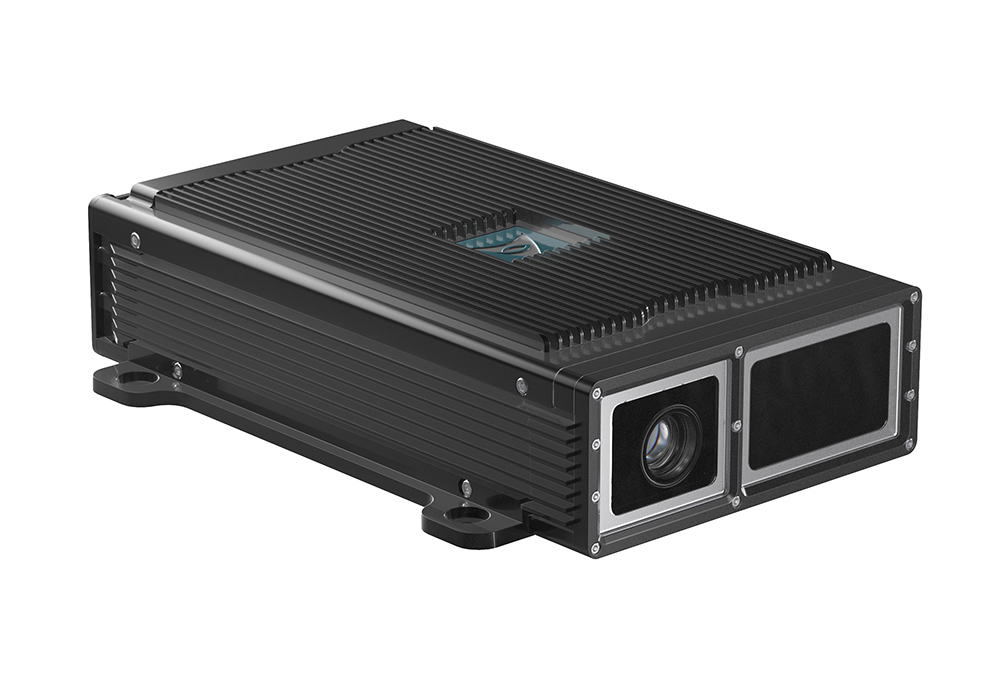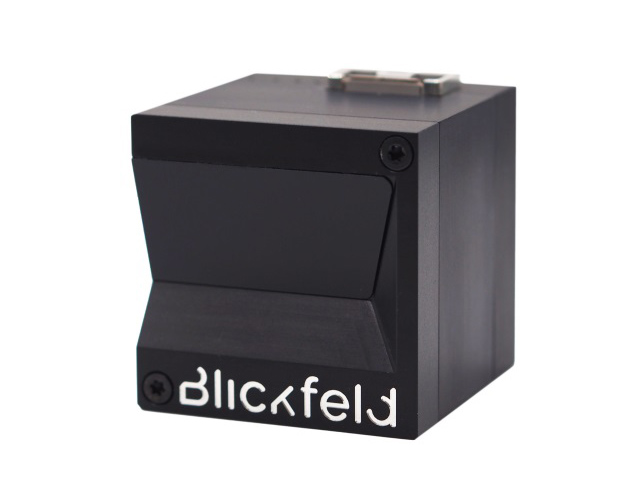
Outsight’s Lidar Cookbook
Outsight’s Lidar Cookbook is a developer’s guide to building and integrating real-time Lidar data into ITS projects, explains the company’s president founder Raul Bravo…
![]() “What we did is to create a Lidar pre-processor, which is software that gets the complicated, raw data from Lidar in real time, and transforms it - regardless of which Lidar you are connecting – by a standardised output into actionable data. This means you can deliver the information that the ITS engineer needs to build their application. Our customers are not the end user - they are the integrators and developers of solutions and we are delivering them the means to build their own solution. So the cookbook is a list of several thousand recipes: for instance, how can I build pedestrian counting in a crosswalk application? We are delivering the source code so people can understand themselves how to combine that. This is unique in the industry, allowing you to prepare a use case, and how to implement that using Lidar in a few lines of code - for example, if you want to make a tolling or speed measurement or parking violation zone detection application. There are many, many use cases and we are giving the codes to the community so you can really build solutions very easily.”
“What we did is to create a Lidar pre-processor, which is software that gets the complicated, raw data from Lidar in real time, and transforms it - regardless of which Lidar you are connecting – by a standardised output into actionable data. This means you can deliver the information that the ITS engineer needs to build their application. Our customers are not the end user - they are the integrators and developers of solutions and we are delivering them the means to build their own solution. So the cookbook is a list of several thousand recipes: for instance, how can I build pedestrian counting in a crosswalk application? We are delivering the source code so people can understand themselves how to combine that. This is unique in the industry, allowing you to prepare a use case, and how to implement that using Lidar in a few lines of code - for example, if you want to make a tolling or speed measurement or parking violation zone detection application. There are many, many use cases and we are giving the codes to the community so you can really build solutions very easily.”
Innoviz
Innoviz is partnering with Sensgrate, which is integrating the InnovizOne Lidar sensor with its computer vision software to improve pedestrian and automobile safety, preventing near-miss collisions at intersections, and collecting unique data for root and predictive analytics.
The firm has launched the first B samples of InnovizTwo, a next-generation automotive-grade Lidar sensor, which offers a combination of range, resolution and field of view to deliver 30 times performance improvement over InnovizOne at 70% of the cost. Innoviz is also working with BMW to deploy the automotive-grade InnovizOne Lidar and perception software in 7 series vehicles, which will have Level 3 autonomy, and is working with a Tier 1 automotive supplier for its autonomous shuttle programme.
Quanergy Systems
San Francisco Municipal Transportation Agency used Quanergy Lidars to help find a solution for multimodal traffic flow optimisation. To test it, a corridor of 10 intersections was selected, with Quanergy M8 Lidars installed at each to provide real-time understanding of activity on the road. TNL’s Traffic Flow Optimization Engine augmented this data and the resulting digital twin contained both the current and future expected locations of all objects. The engine calculated 20,000 signal plans per intersection per second, taking the road network and mode prioritisation into account, and communicating to the signal controllers the next phase to be set. The result was significant improvements to all traffic, with the solution expected to deliver immediate operational cost savings, better road safety and an increase in public transit’s ability to stick to schedules.
Seoul Robotics
Seoul Robotics’ latest Lidar project, Level 5 Control Tower (LV5 CTRL TWR), achieves Level 5 vehicle autonomy with autonomy through infrastructure (ATI), by placing sensors equipped with 3D perception software on the infrastructure in a set area rather than on individual vehicles. The mesh network of computers and sensors communicates with other sensors and with the 4/5G systems that come standard on vehicles today to guide hundreds of vehicles simultaneously. The project is being implemented with client BMW at its Munich factory to guide completed vehicles from the factory floor to the parking lot autonomously through infrastructure. The company says it is in talks with other OEMs. Seoul Robotics also has a growing partnership with the University of Tennessee Chattanooga’s Center for Urban Informatics and Progress (UTC - CUIP) that saw the development of the award-winning MLK Smart Corridor, a testbed utilising 3D technology to understand pedestrian safety in high-traffic areas.
Velodyne Lidar
Velodyne’s Intelligent Infrastructure Solution (IIS) is a first-of-its-kind application that uses Lidar and AI from Bluecity to create real-time 3D maps using only a single sensor installed on a traffic pole to provide coverage for an entire intersection or section of highway. Velodyne has deployed IIS installations across North American cities, including Austin, Boca Raton, New Jersey, San Jose and Toronto. The company is collaborating with Rutgers Center for Advanced Infrastructure and Transportation (Cait) to deploy its IIS. Cait will install Velodyne’s Lidar sensors at multiple intersections in New Brunswick, New Jersey, and the project will serve as a testbed for mobility data-gathering, analysis and sharing technologies designed to help implement connected and autonomous vehicle systems in the future.
Bluecity
Bluecity is present in more than 50 municipalities across North America, and in Europe it has deployed sensors in Germany, Sweden and Finland - where Helsinki was the company’s first European implementation. The first phase of the city’s Lidar project included road user counts and classification – but tramway cars had not been detected by the solution’s AI algorithm so were not recognizable. The AI model was retrained successfully and plans to upscale the project have started. Commsignia linked with Bluecity to have the Lidar data fed to its computer which then broadcast it to vehicles on the road, giving them valuable traffic information.
LeddarTech
LeddarTech has been providing Lidar for production deployments for over a decade, with speed enforcement, tolling and traffic light management among the applications for which it has supplied solutions, either directly or through system integrators. New products include the Leddar Sight, developed for mobility, ITS and industrial system developers looking for reliable, durable Lidar sensing in the most challenging environments. The company says its Lidar sensors deployed in ITS applications have exceeded 75 million hours in operation, with many units exceeding 10 years’ continuous operation without outage.
 AEye
AEye
AEye says it is working, through its system integrator partners, on a number of deployments that help transportation authorities respond faster, reduce cost of operations, predict conditions and be preventive with safety measures. AEye’s 4Sight M Adaptive Lidar has long-range detection capability, coupled with its ability to customise the detection, configuration and scan patterns per use case. This applies whether the application is for urban traffic or for highway management, where requirements often include a detection range of 300m and high frame rates in excess of 30Hz for automated tolling.
Red Fox ID
Red Fox ID’s first deployment of Lidar is on the Ohio Turnpike, a project which is at the final customer testing phase with production installs starting this quarter. The original use of the Lidar is for height measurement and this has been extended so that the Lidar acts as a secondary system to the primary loop-based system. Vehicles can be detected and VES triggers generated using just the Lidar data. VDoT I-64 Express lanes use only Lidar as the vehicle detection system. The system is designed as a multi-lane, free-flow system with tag correlation using a single gantry and a single rear camera trigger. Vehicle speeds can vary from stop and go (down to 3’ separation) and up to 100mph.
 Blickfield
Blickfield
Blickfield is working with clients like Frankfurt Airport to reduce waiting times at the security check and with the research organisation Fraunhofer IPM, and partnering with the University of Applied Sciences Aachen to explore Lidar use cases in train applications. In cooperation with car manufacturers like Audi, Mercedes Benz, Honda and Nissan, Tier 1 suppliers like Continental, and also universities, Blickfeld is working on projects such as the IN2Lab funded by the Bavarian Joint Research Program – which will develop a safety system for automated driving – and the LiDARshared research project, funded by the German Federal Ministry of Transport and Digital Infrastructure, to develop an adaptive Lidar control system for real-time data acquisition and transmission in automobiles.
Ouster
RWTH Aachen University and the City of Aachen are developing digital twins for V2X simulation with Ouster Lidar in the Corridor of New Mobility Aachen – Düsseldorf project. The aim is to prepare for the widespread, safe adoption of automated vehicles by building a connected infrastructure that supports mixed traffic and all road users. With more than 100 Ouster OS1 digital Lidar sensors and 200 cameras, researchers built 60 mobile measuring stations to be deployed across a 4.3km stretch of urban, highway, and rural infrastructure. Data from Ouster’s 128-channel high-resolution point cloud is used to develop algorithms that classify cars, trucks, pedestrians, two-wheelers and other road objects.





